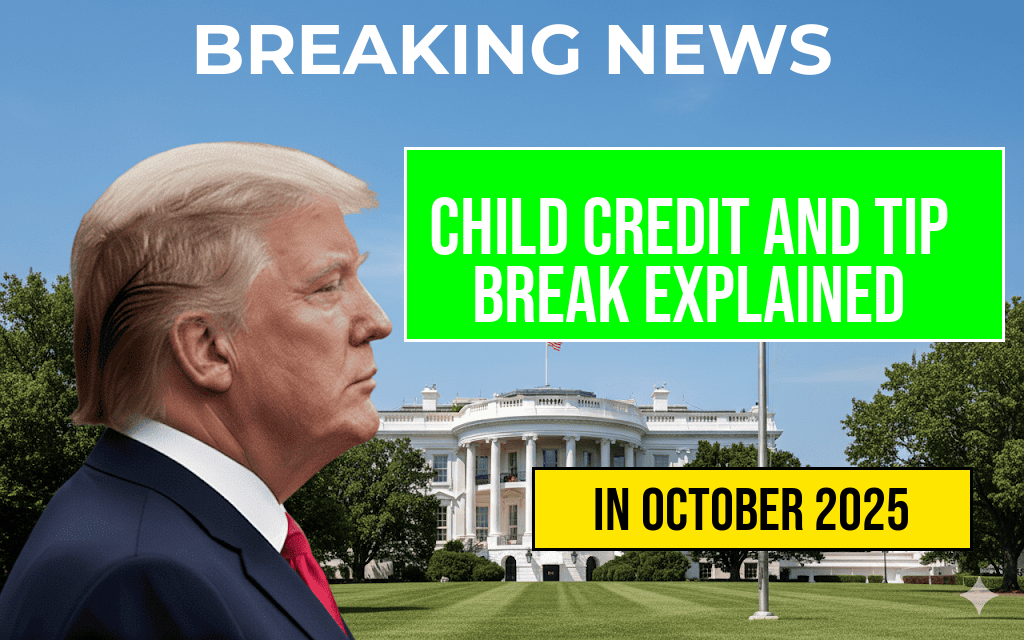Recent discussions have surfaced regarding a Child Tax Credit of $2,200 and a substantial $25,000 tip break, both of which have sparked considerable interest among taxpayers. However, claims that these measures represent the “largest ever” credits in history are misleading. While these financial benefits are real and offer relief to families and service industry workers, they do not surpass previous iterations of tax credits and deductions aimed at supporting American families. This article explores the specifics of the current tax credits, the nuances of the proposed tip break, and the context in which these claims have emerged.
Understanding the Child Tax Credit
The Child Tax Credit (CTC) has undergone several changes over the years, particularly in response to economic challenges faced by families. The current iteration of the CTC allows eligible families to receive up to $2,200 per qualifying child under the age of 17. This amount reflects a significant increase from past years, designed to alleviate the financial burden on parents and guardians during these uncertain times.
- Eligibility: To qualify for the full credit, families must meet specific income thresholds. As of 2023, single filers earning less than $200,000, and married couples earning under $400,000 are eligible for the full amount.
- Refundable Credit: The credit is partially refundable, meaning that if the credit exceeds the amount of taxes owed, families can receive a refund for the difference.
- Impact: This credit aims to support families in managing everyday expenses, including education, healthcare, and childcare costs.
The $25,000 Tip Break Explained
In conjunction with the updated Child Tax Credit, a proposal for a $25,000 tip break has emerged, primarily aimed at service industry workers such as waitstaff and bartenders. This proposed deduction seeks to recognize the unique financial challenges faced by those who rely heavily on tips for their income. While the specifics of this tip break are still being debated in legislative circles, it is positioned as an effort to provide additional support during economic recovery.
Key Features of the Proposed Tip Break
- Tax Deduction: The proposed tip break would allow workers to deduct a portion of their reported tips from their taxable income, potentially reducing their overall tax burden.
- Eligibility Requirements: To qualify, workers may need to provide proof of tip income and comply with specific reporting guidelines to ensure transparency.
- Economic Context: This break is particularly relevant as the service industry continues to recover from the impact of the COVID-19 pandemic, which drastically affected employment and income levels in this sector.
Misleading Claims of “Largest Ever” Credits
Despite the benefits these tax measures may provide, claims labeling them as the “largest ever” are not entirely accurate. Historical tax credits, such as those enacted during the American Rescue Plan in 2021, offered enhanced benefits that exceeded the current amounts. For instance, the CTC was temporarily increased to $3,600 for children under six and $3,000 for those aged six to 17 during that period. Such enhancements were designed as a direct response to the economic fallout from the pandemic.
| Year | Credit Amount | Notes |
|---|---|---|
| 2021 | $3,600 (under 6), $3,000 (ages 6-17) | Enhanced under the American Rescue Plan |
| 2022 | $2,000 | Return to pre-pandemic levels |
| 2023 | $2,200 | Increased due to inflation adjustments |
Conclusion: Navigating Tax Benefits
As taxpayers navigate these financial benefits, it is essential to remain informed about the details and implications of the Child Tax Credit and the proposed tip break. While these measures provide valuable support, it is crucial to approach claims regarding their magnitude with scrutiny. Understanding the full context of these credits can empower families and workers to make the most of available resources.
For further information, individuals can visit reputable sources such as the IRS Child Tax Credit page or consult articles from Forbes for detailed insights into tax credits and deductions.
Frequently Asked Questions
What is the Child Credit amount mentioned in the article?
The article states that the Child Credit is worth up to $2,200 per qualifying child.
What is the $25,000 tip break that is mentioned?
The $25,000 tip break refers to a tax provision that allows certain service industry workers to exclude tips from their taxable income up to that amount.
Are these credits and breaks the largest ever offered?
No, the article clarifies that while the Child Credit and tip break are significant, they are not the ‘largest ever’ as claimed in some reports.
Who qualifies for the Child Credit?
Eligibility for the Child Credit typically includes criteria such as age, relationship to the taxpayer, and income level, which may vary by tax year.
Can the $25,000 tip break benefit all service workers?
Not all service workers will qualify for the $25,000 tip break, as eligibility depends on specific criteria set by the IRS and the nature of their employment.






